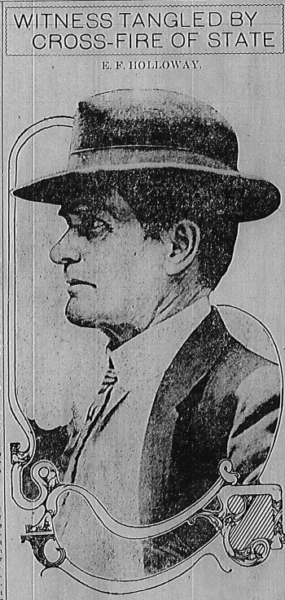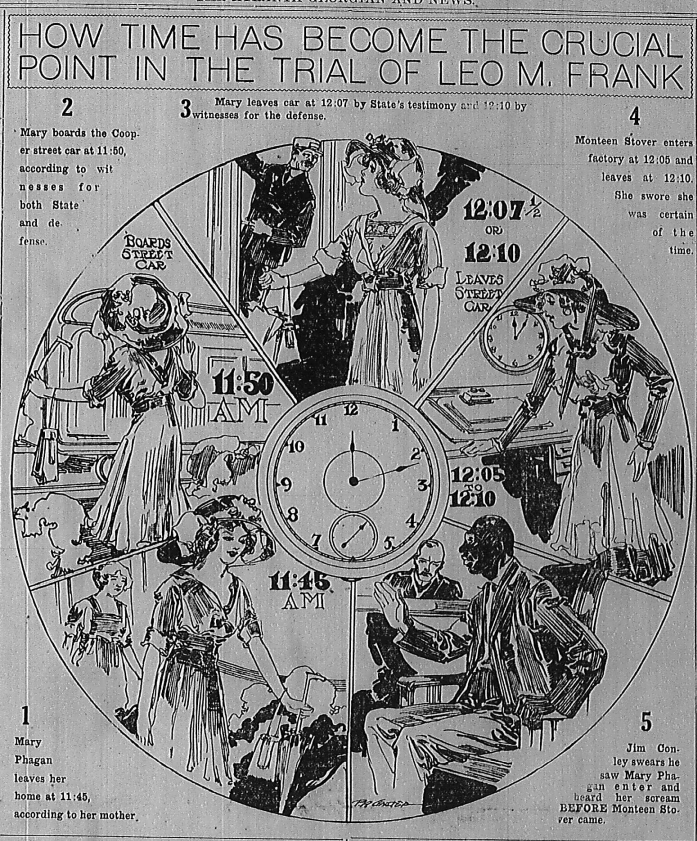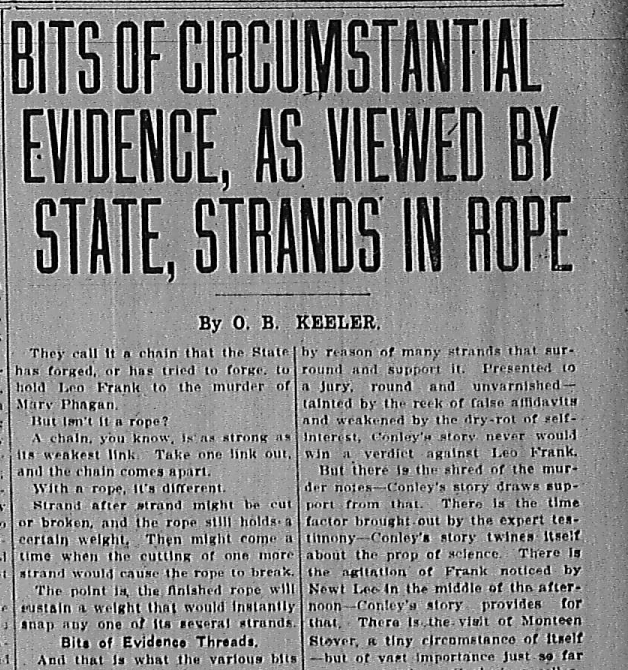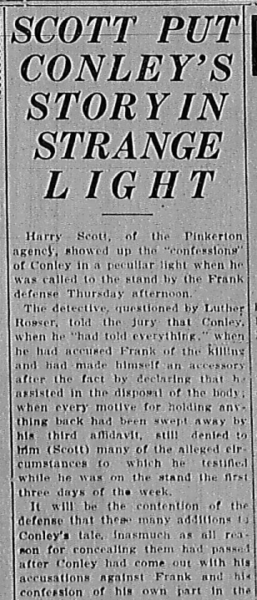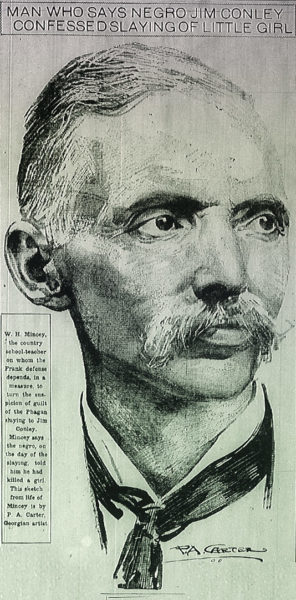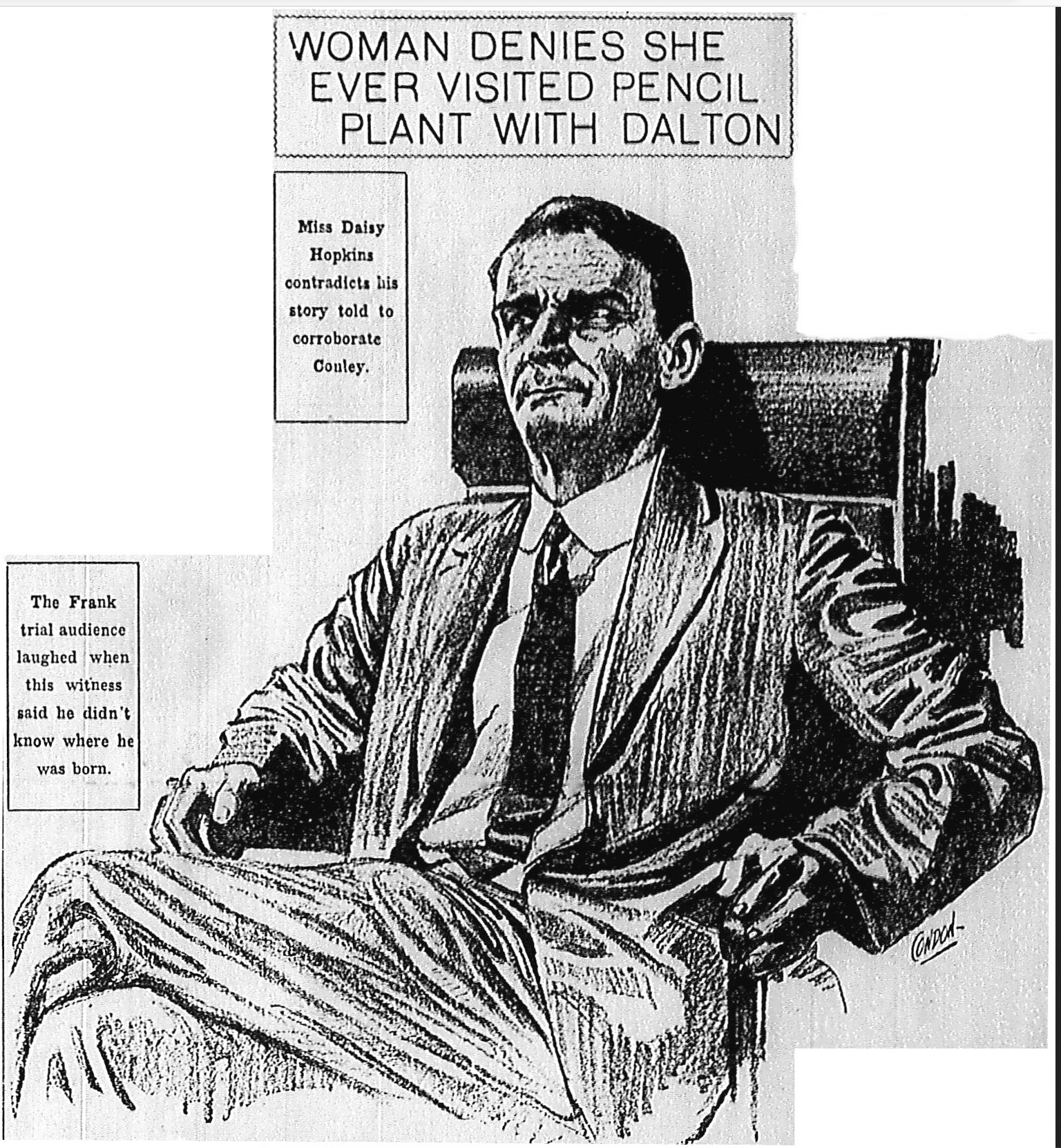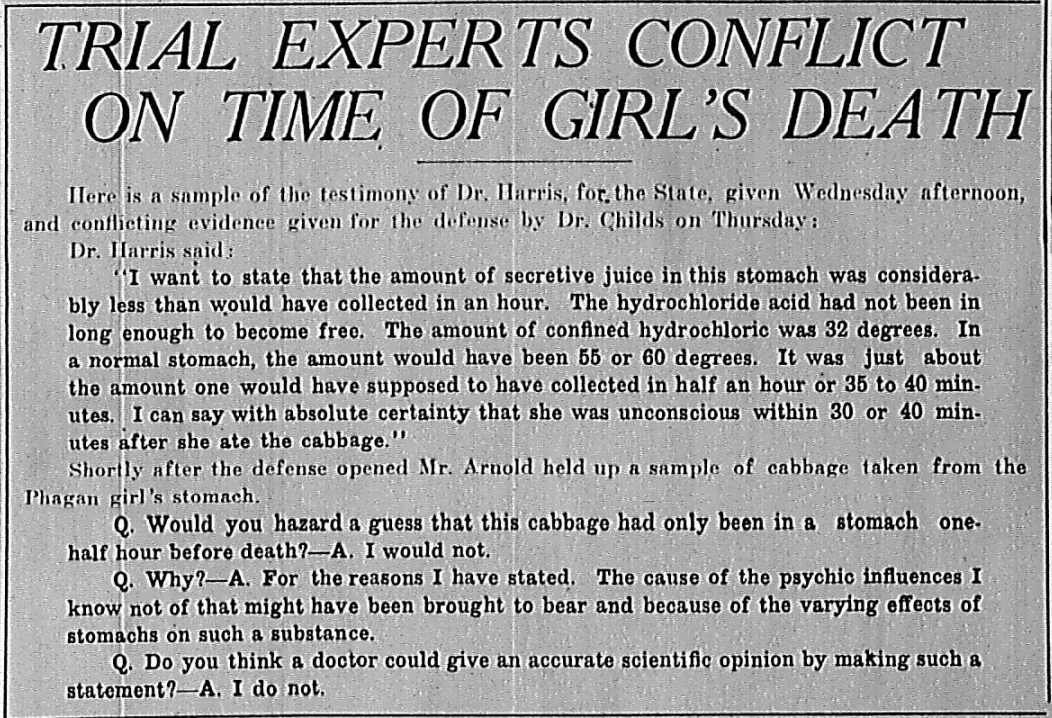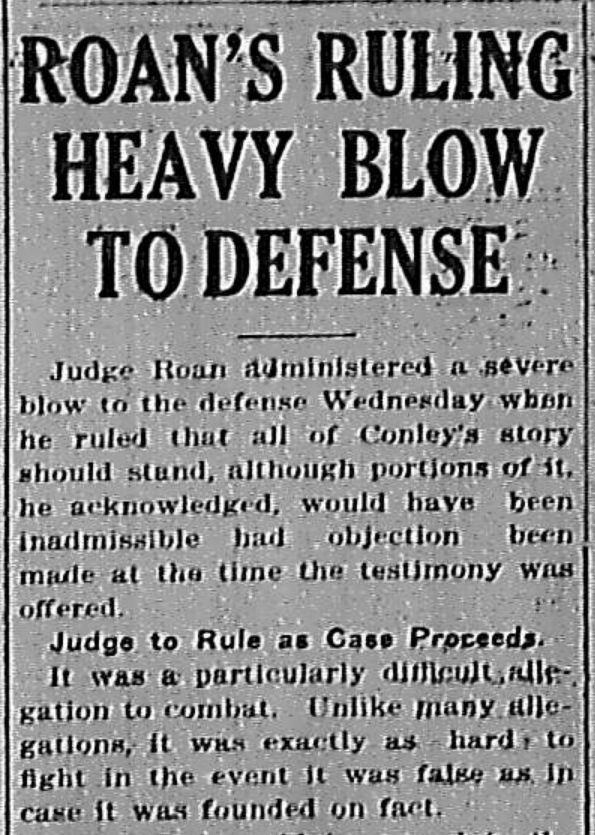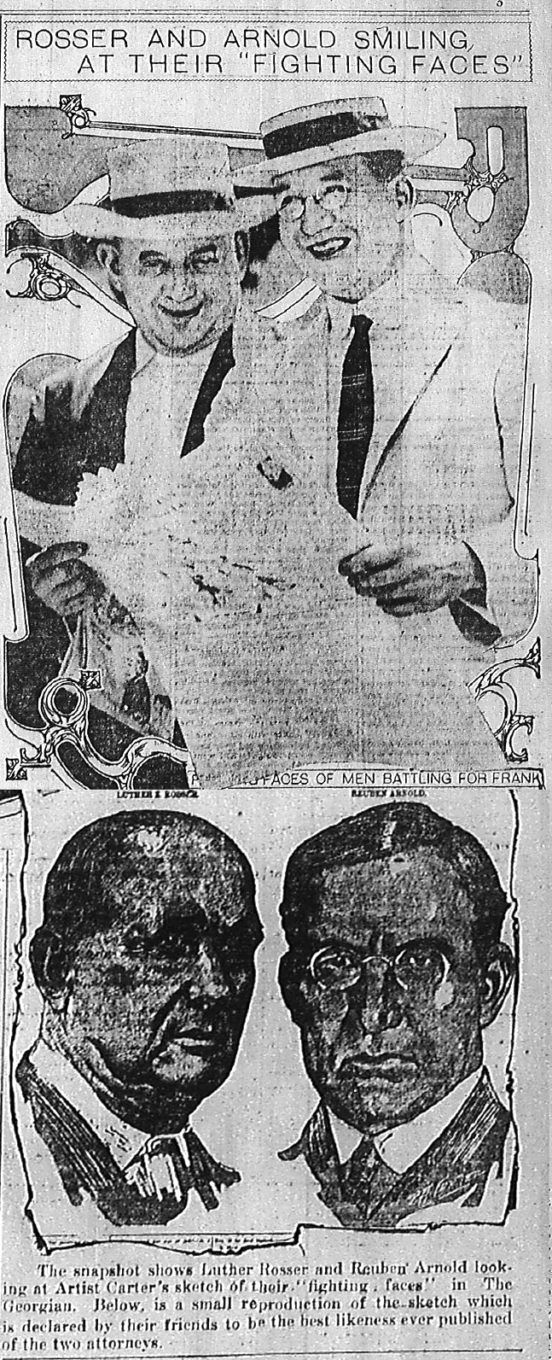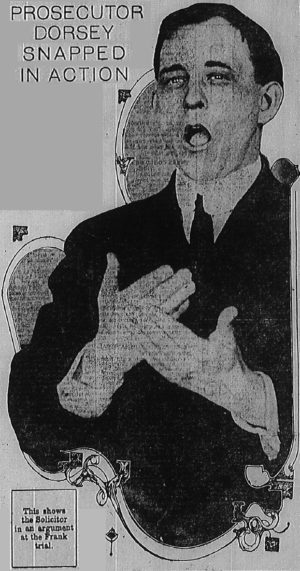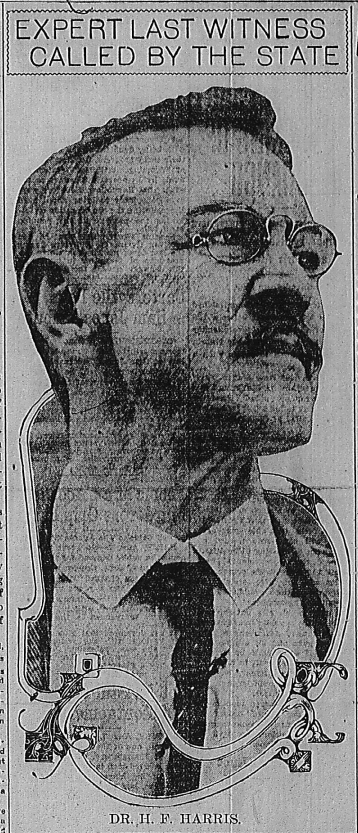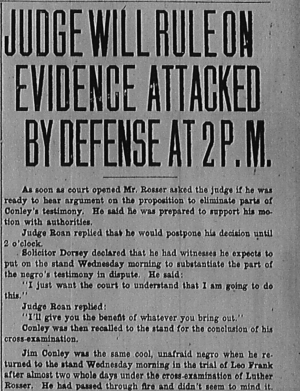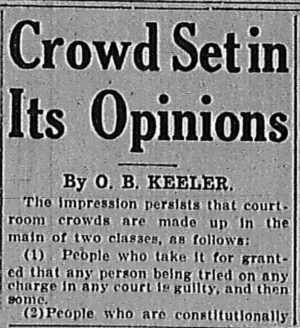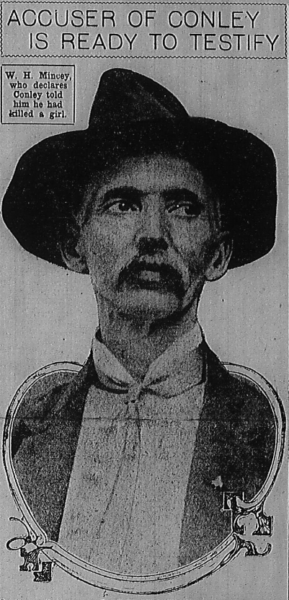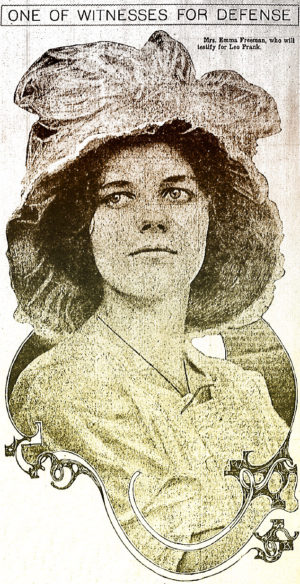Another in our series of new transcriptions of contemporary articles on the Leo Frank case.
Atlanta Georgian
August 9th, 1913
Intricacy of Figures Produced by Schiff Under Fire
WOMEN NEVER CAME INTO FACTORY OFFICE, WITNESS TESTIFIES
The second week of the Frank trial ended at 12:30 Saturday with a bitter battle in progress over the testimony of Herbert G. Schiff, assistant superintendent of the National Pencil Factory.
Schiff was called soon after court opened in the forenoon and was on the stand when the adjournment was taken until Monday.
Schiff, besides denying that Frank ever had women in his office, describes in elaborate detail the duties of superintendent, particularly his work on the afternoon the little Phagan girl came to her death. It was the purpose of the defense to show that it would have been most improbable that Frank, after committing a murder, calmly would have sat down with the burden of guilt resting on his conscience and proceeded with his usual preciseness in the intricate and involved computations required in making out the financial sheet.
Dorsey was given the witness toward the close of the session and started at once to attack Schiff’s estimates of time that it would have required for the various details of the work. Schiff made a good witness and the solicitor was able to make little headway in his cross-questioning.
Continue Reading →

